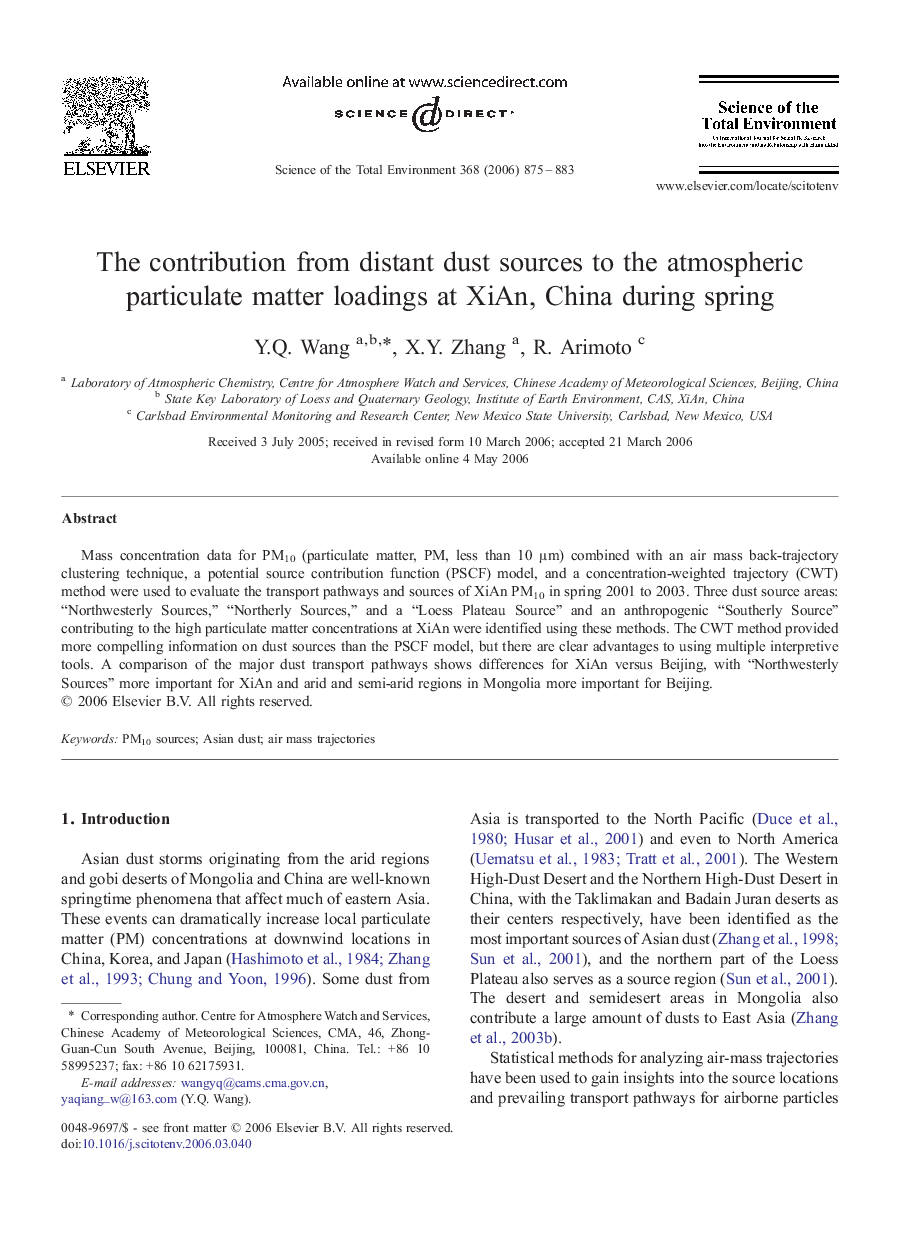| Article ID | Journal | Published Year | Pages | File Type |
|---|---|---|---|---|
| 4433891 | Science of The Total Environment | 2006 | 9 Pages |
Mass concentration data for PM10 (particulate matter, PM, less than 10 μm) combined with an air mass back-trajectory clustering technique, a potential source contribution function (PSCF) model, and a concentration-weighted trajectory (CWT) method were used to evaluate the transport pathways and sources of XiAn PM10 in spring 2001 to 2003. Three dust source areas: “Northwesterly Sources,” “Northerly Sources,” and a “Loess Plateau Source” and an anthropogenic “Southerly Source” contributing to the high particulate matter concentrations at XiAn were identified using these methods. The CWT method provided more compelling information on dust sources than the PSCF model, but there are clear advantages to using multiple interpretive tools. A comparison of the major dust transport pathways shows differences for XiAn versus Beijing, with “Northwesterly Sources” more important for XiAn and arid and semi-arid regions in Mongolia more important for Beijing.
